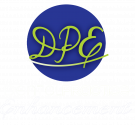Quality healthcare outcomes greatly depend on a patient’s compliance with the recommended treatment regimens. Unfortunately, patients sustain significant risks by misunderstanding, overlooking, or disregarding healthcare advice. Extensive research suggests that there are strong positive correlations between a healthcare team member’s communication skills and a patient’s capacity to:
- Carry out medical recommendations
- Self-manage a chronic medical condition
- Embrace preventive health practices
Effective communication is vital to a patient’s commitment to care and positive treatment outcomes. So, here are four tips that you can immediately implement for improved patient communication.
1. Ask for Permission (Not Forgiveness)
Although the adage is “ask for forgiveness, not permission,” this is an ineffective and unethical practice in patient communication. Allow patients to take an active role in their dental exam and ask guiding questions during the procedure. Guiding questions can:
- Empower patients by granting consent
- Ease dental anxiety
- Initiate patient engagement
During your next dental exam, ask questions such as:
- Do you feel too hot or too cold?
- May I slowly raise your chair?
- May I look inside your mouth?
- Can I explain to you what I see?
- Would you like to add any other treatments today?
2. Break Down Information
When we gather information concerning our patients’ health, it can be challenging not to share every detail. Although sharing our wealth of knowledge with our patients can be exciting, too much information can be daunting. Thus, quickly forgotten.
In a study published by the Journal of the Royal Society of Medicine, researchers revealed staggering statistics regarding patient recall:
- Up to 80% of the information provided by physicians is forgotten immediately
- Furthermore, the greater the amount of information supplied, the lower the proportion correctly recalled.
- Also, almost half of the information that is remembered is incorrect.
- Likewise, the more complex a presentation is, the less a patient retains.
Based on this study, it’s wise to break down important information so that it’s easier for patients to understand. When patients can focus on comprehending one or two topics at a time, it is easier for them to understand and implement. If patients require further explanation, consider providing supplemental materials (such as pamphlets). Supplemental materials can serve as a valuable tool that patients can return to for accurate information.
3. Actively Listen
It’s human nature to want to be heard, and communication gaps can manifest and deepen if someone dismisses your needs or concerns.
Active listening means understanding, retaining, and responding to what your patient says. Both parties must be fully present and attentive when the other person speaks and refrain from judgment. Then, summarize what was heard and clarifying any misconceptions.
For example, your patient is avidly against pulling their tooth and replacing it with a dental implant. Instead of jumping to conclusions and assuming they do not know what’s best, ask why they object to this treatment suggestion. If he or she worries about cost, consider offering other affordable prosthetic devices that may fit their budget and can be covered by insurance.
4. Maximize Patient Communication by Hiring a Virtual Administrator
If your dental team is bogged down with tasks at hand, it will be challenging to prioritize high-quality patient communication and to gradually incorporate the previously mentioned communication techniques.
Instead, consider hiring a virtual administrator to alleviate the workload. Our trained virtual administrators cover day-to-day tasks, such as communicating with patients to collect on accounts with overdue balances, so that your team can focus on optimizing in-person interactions. Contact Dental Practice Enhancement online or call (833) DPE-FOR-U to learn how you can hire a virtual administrator.



